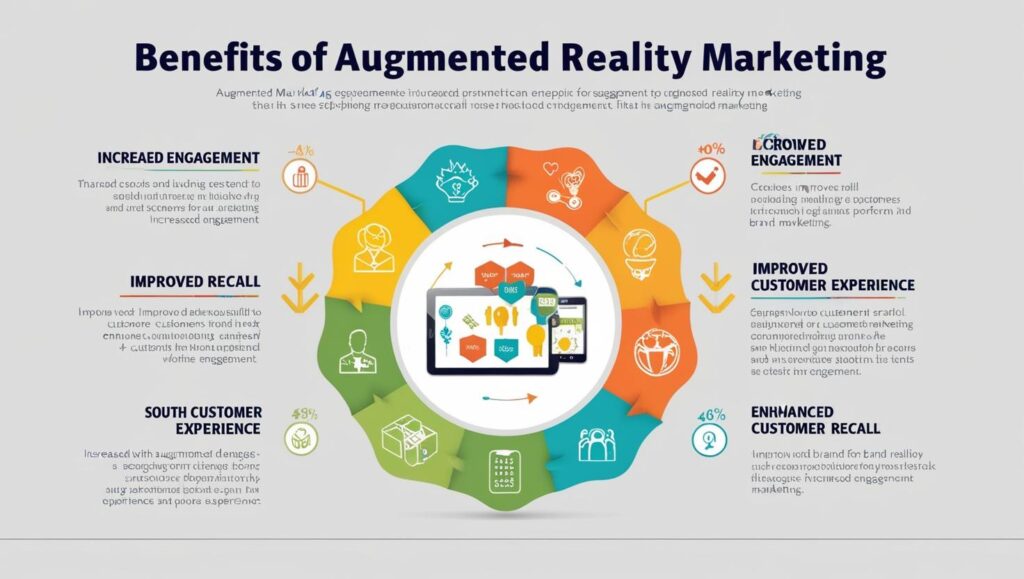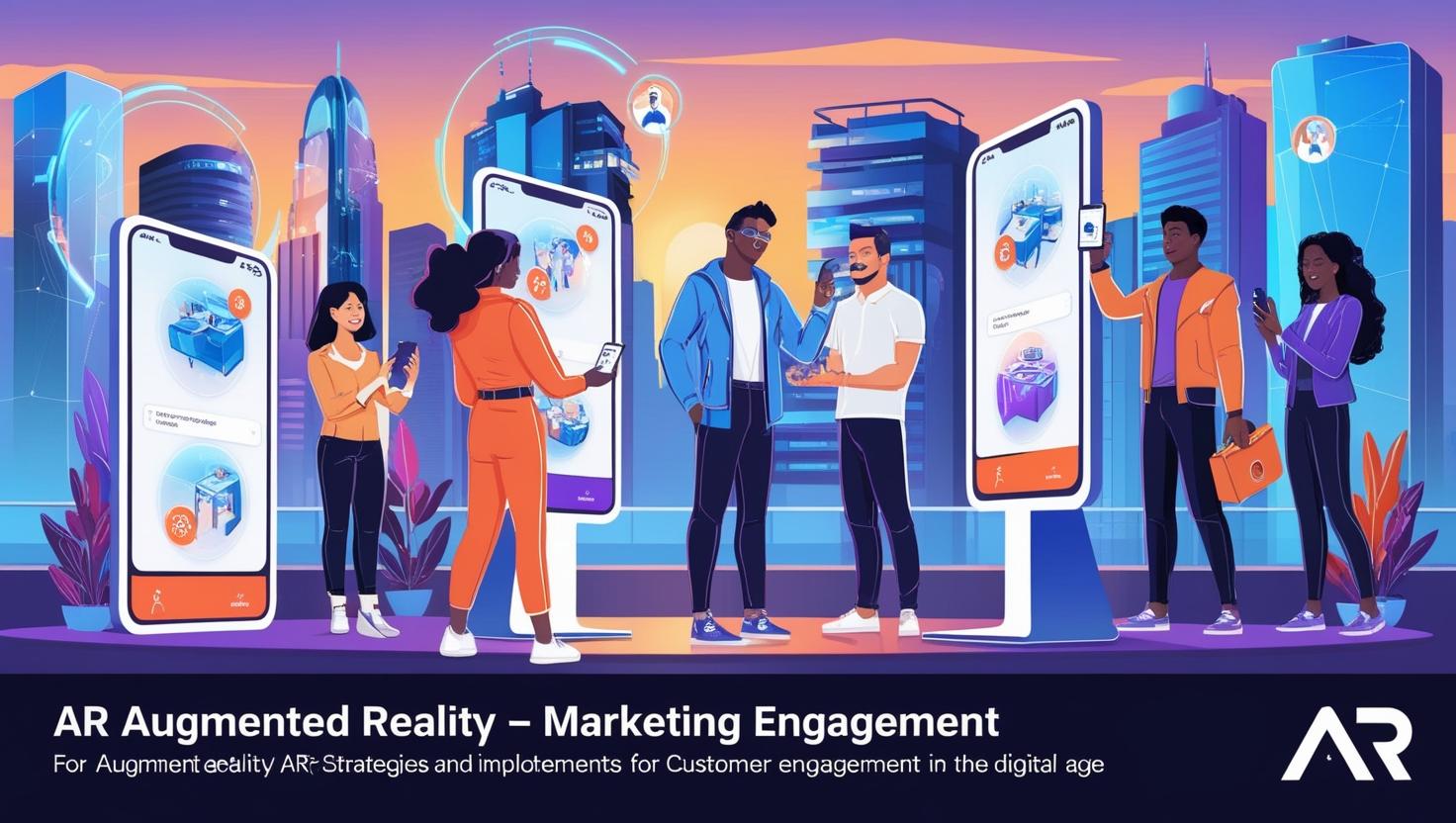Introduction
The digital marketing landscape is rapidly evolving, and brands are continually seeking innovative strategies to stand out. One of the most groundbreaking approaches gaining momentum today is augmented reality marketing. As businesses strive to create more immersive and engaging customer experiences, AR digital marketing has emerged as a game-changing tool. In this comprehensive guide, we’ll explore what augmented reality marketing is, how it benefits brands and actionable strategies to implement it effectively.
What is Augmented Reality Marketing?

Augmented reality marketing refers to the integration of AR technology into marketing campaigns to create interactive, immersive experiences. Unlike traditional digital marketing methods, AR digital marketing overlays digital information such as graphics, sounds and animations onto the real world. This innovative approach not only captures consumer attention but also fosters a deeper emotional connection with the brand.
–Enhanced Customer Engagement: With AR, brands can transform ordinary interactions into memorable experiences.
–Interactive Content: Users can interact with products or services virtually, gaining a better understanding before making a purchase.
–Brand Differentiation: Leveraging AR sets a brand apart in a competitive market, making it more attractive to tech-savvy consumers.
The Benefits of Augmented Reality Marketing

1. Improved Customer Engagement
AR customer engagement is one of the most compelling benefits. By allowing customers to interact with products in a simulated environment, brands can offer a personalized experience that traditional methods often lack.
2. Higher Conversion Rates
Interactive and immersive experiences can drive higher conversion rates. When customers see a product in action through AR, their trust and confidence in the product increase, leading to more informed purchase decisions.
3. Enhanced Brand Loyalty
Augmented reality advertising not only attracts attention but also builds lasting relationships. A unique AR campaign can leave a lasting impression, encouraging repeat visits and fostering brand loyalty.
4. Cost-Effective Marketing
Although AR technology may seem expensive at first, it can reduce costs in the long run by minimizing the need for physical displays and enhancing online engagement. AR marketing strategies allow brands to reach a wider audience with less expenditure compared to traditional methods.
How to Implement Augmented Reality in Digital Marketing
Implementing augmented reality marketing requires strategic planning and a clear understanding of your target audience. Here’s a step-by-step guide:
1. Define Your Objectives
Start by outlining what you want to achieve with AR digital marketing. Is it to boost engagement, increase conversions or enhance customer loyalty? Clear goals will guide your strategy.
2. Identify Your Audience
Understand who your customers are and how they interact with digital content. Use intent-based keywords like “what is augmented reality marketing” and “learn AR marketing” to tailor your content for users seeking in-depth knowledge.
3. Choose the Right AR Tools
Research AR platforms and tools that align with your campaign goals. Whether it’s developing a mobile app or integrating AR into your website, select tools that offer seamless user experiences.
4. Develop Creative Content
Creativity is at the heart of immersive digital marketing. Develop interactive content that tells your brand story through AR experiences. For instance, allow users to visualize products in their environment or engage with interactive brand narratives.
5. Integrate with Other Marketing Channels
Augmented reality should complement your existing marketing efforts. Use social media, email marketing, and paid advertising to promote your AR experiences, ensuring that your campaign reaches a broad audience.
6. Measure and Optimize
Use analytics to track the performance of your AR campaigns. Metrics such as engagement rates, conversion rates, and user feedback are crucial for understanding the effectiveness of your strategy and making necessary adjustments.
Case Studies: Brands Leading in AR Digital Marketing
Several brands have already harnessed the power of augmented reality marketing to create innovative campaigns. Here are a few examples:

–IKEA Place:
IKEA’s AR app allows customers to virtually place furniture in their homes, revolutionizing the way customers shop for home decor. This immersive experience not only boosts engagement but also reduces purchase hesitation by offering a realistic preview of products.

–L’Oréal’s Virtual Makeup App:
By using augmented reality, L’Oréal lets customers try on makeup virtually. This interactive approach has increased customer satisfaction and engagement, setting a new standard for beauty industry marketing.

–Pepsi Max’s Unbelievable Bus Shelter:
Pepsi Max transformed a bus shelter into an interactive AR experience that surprised and delighted commuters. This campaign is a prime example of how AR digital marketing can create buzz and enhance brand recall.
Future Trends in AR Digital Marketing

As technology continues to advance, the role of augmented reality in digital marketing is expected to grow. Here are some trends to watch:
–Integration with AI:
Combining AR with artificial intelligence will allow brands to create even more personalized experiences. Imagine an AR campaign that adapts in real-time to user behavior!
–Enhanced Mobile Experiences:
With the increasing power of mobile devices, AR experiences are becoming more accessible. Brands are investing in mobile AR to reach a broader audience and provide on-the-go interactive experiences.
–Expansion into New Industries:
While retail and beauty have been early adopters, industries such as real estate, education, and healthcare are beginning to explore AR digital marketing. The possibilities are limitless, and early adopters will have a competitive edge.
Conclusion
Augmented reality marketing is revolutionizing the way brands connect with their audiences. By creating immersive, interactive experiences, AR digital marketing not only enhances customer engagement but also drives higher conversion rates and builds long-term brand loyalty. As technology evolves, brands that invest in AR will be well-positioned to lead in the digital age.
Whether you’re a seasoned marketer or new to digital innovation, now is the time to explore the potential of augmented reality marketing. Embrace this cutting-edge technology to create memorable experiences that resonate with your audience and set your brand apart from the competition.
At Balistro, we specialize in helping businesses grow through effective digital marketing strategies. From Google Ads to Meta Ads, we deliver data-driven campaigns that maximize your ROI and drive real results. If you’re looking to boost your online presence, generate leads, or scale your e-commerce business, our expert team is here to help. Contact us today to learn more about how we can support your advertising needs!



